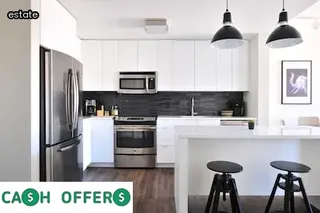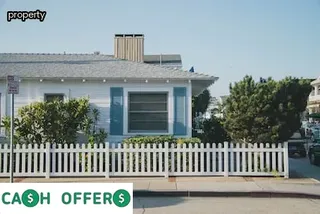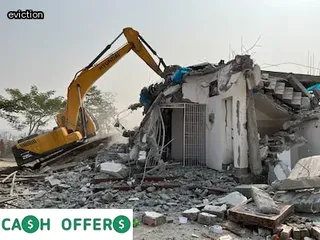In South Dakota, landlord/tenant relationships are governed by state laws and regulations. These include statutes defining the rights and responsibilities of landlords and tenants, such as security deposits, occupancy limits, rent payments and late fees.
Additionally, notice requirements must be followed when terminating a rental agreement or evicting a tenant. Landlords must also comply with state laws regarding maintenance of the property, including safety regulations and health standards.
Landlords should also understand the legal implications of abandoned property in South Dakota. If a tenant abandons their rental unit, landlords must follow specific procedures to protect their interests while ensuring any personal belongings left behind are disposed of in accordance with the law.

Tenants need to be aware of their rights and responsibilities when it comes to South Dakota landlord-tenant laws, especially when it comes to abandoned property. In the state of South Dakota, tenants have the right to receive a written notice from their landlord prior to entering their rental unit for any reason.
This notice should include a specific date and time that the landlord will enter the unit. Tenants also have the right to refuse entry if they are not given proper notice or if the entry is during an unreasonable hour.
Furthermore, landlords must provide tenants with at least 24 hours’ notice before entering the unit for non-emergency repairs or inspections. When dealing with abandoned property, landlords must follow certain procedures in order to properly dispose of these items.
The landlord must make a good faith effort to contact tenants regarding abandoned items, including attempting contact by telephone or mail at least once every 30 days until all attempts have been exhausted. After this process has been followed, landlords may keep, store or sell any property that remains unclaimed after 90 days.
Tenants should be aware of these rights and responsibilities in order to protect themselves when renting in South Dakota.
When it comes to South Dakota landlord-tenant laws, landlords should be aware of their rights and responsibilities when it comes to abandoned property. It is important for landlords to understand the legal process for dealing with a tenant’s abandoned property, as well as the state regulations for disposing of that property.
The South Dakota statutes provide clear guidance on how a landlord should handle abandoned property, including specific steps for handling and disposing of personal belongings. Landlords must also ensure they are giving tenants proper notice before entering their rental unit or disposing of any items left behind.
They must also be sure to follow all local ordinances and keep accurate records throughout the process. Ultimately, understanding your rights and responsibilities is key in order to properly manage abandoned property in accordance with South Dakota law.

Understanding the terms of your rental agreement is an important part of being a landlord in South Dakota. All agreements should be written down and clearly outline the rights and responsibilities of both parties.
It's important to note that all tenants must be given a copy of the rental agreement within 10 days of signing it, and any changes or amendments must also be provided in writing. Furthermore, landlords are obligated to return any security deposits within 30 days after the tenant has vacated the property.
It's also essential for landlords to understand their state's laws about abandoned property, as this determines how they can proceed when a tenant leaves without giving notice. In general, landlords must take reasonable steps to contact the tenant before disposing of any items left behind on their property.
When renting property in South Dakota, it is important to be aware of the state's landlord-tenant laws and how they affect your tenancy agreement. Before signing your lease, make sure you read it thoroughly and understand all of its provisions.
Many agreements contain a clause regarding abandoned property, which outlines the rights of both parties in the event that the tenant has left personal items behind. This clause typically states that if the tenant does not contact the landlord within a certain time period after vacating the premises, then any remaining property is considered abandoned and may be disposed of by the landlord.
It is also important to note that tenants may still be liable for rent or other fees even after abandoning their property. As such, it is important to carefully review your tenancy agreement so you can avoid any potential legal issues.

Quiet enjoyment is a legal term that applies to nearly all leases and rental agreements. In the context of South Dakota landlord-tenant laws, it means that a tenant has the right to use and occupy the property without interruption from the landlord or other individuals.
It also implies that tenants are not responsible for any damage caused by another party during their tenancy, such as vandalism or criminal activity. The landlord is obligated to provide maintenance services and keep up with repairs in order to ensure that tenants enjoy quiet enjoyment of the property.
Furthermore, if there is an issue with a tenant’s neighbors or other parties, the landlord must take action to resolve it in order for tenants to have undisturbed occupancy of their rental unit. Quiet enjoyment is essential for tenants to be able to peacefully possess and utilize their rental space during their lease agreement.
When it comes to South Dakota landlord-tenant laws, one of the most important considerations is habitability. The state's Right to Repair Law gives tenants the right to request repairs any time a condition exists that affects the health, safety or welfare of those living in the rental unit.
Landlords are expected to make the requested repairs within a reasonable amount of time, or provide compensation if they choose not to do so. Tenants may also be able to file suit against their landlord if they feel their basic housing rights have been violated due to failure or refusal to repair, and they could be eligible for damages or other legal remedies.
It is recommended landlords remain aware of any relevant landlord-tenant laws regarding habitability in order to avoid potential disputes down the line.

As a landlord in South Dakota, you have certain rights and responsibilities regarding security deposits. These deposits are intended to protect the landlord from any potential damages that may occur during tenancy.
A security deposit must be kept in an escrow account and both the tenant and the landlord must receive proof of deposit. It is important to note that the landlord has up to 30 days from the end of a lease agreement to return the security deposit after deducting for any damages or losses incurred.
Additionally, it is important for landlords to understand what constitutes “normal wear and tear” versus actual damage; normal wear and tear does not qualify for deductions from a security deposit. If a tenant abandons their rental property, the landlord has an obligation to take reasonable steps to try and locate them before disposing of any personal items left behind in accordance with state law.
The purpose of a security deposit is to protect the landlord from any damages that may occur during a tenant’s residency. A landlord typically charges a security deposit to cover any repairs or cleaning that may be necessary when the tenant moves out, such as fixing broken fixtures or replacing worn carpet.
In South Dakota, the maximum amount of money landlords can charge for a security deposit is two months’ rent, however, this varies depending on the type of residence the tenant has signed up for. The deposit must be held in an interest-bearing account, and must be returned within 30 days after tenancy ends.
If there is any dispute regarding damage to the property, landlords have 14 days to inform the tenant in writing of what deductions will be taken from their security deposit. It is important for both tenants and landlords in South Dakota to understand their rights and obligations when it comes to handling abandoned property and security deposits.

It is important for both landlords and tenants to understand security deposit refunds as there are common misconceptions that can lead to conflict. It is beneficial for both parties to have a written lease or rental agreement in place so that the expectations and responsibilities of all involved are clear.
Property owners should prepare for unit inspections by ensuring the property meets all applicable health and safety standards, while tenants should ask essential questions before renting a home such as who pays for utilities and what type of maintenance is expected. It is also important for renters to stay vigilant against rental listing scams, submit an effective tenant application, and weigh the pros and cons of month-to-month versus yearly leases.
Property owners and renters alike should be aware of maintenance basics, understand when they can terminate a tenancy agreement, know how to handle evictions according to South Dakota law, and be aware of what happens legally if a tenant abandons property in South Dakota.
In South Dakota, the process of eviction is outlined in state statute 43-32. The landlord must provide proper written notice to the tenant before they can legally evict them from the property.
This notice must generally be sent at least 15 days prior to the eviction taking place. In certain cases, a landlord may have legal grounds to evict a tenant after only 3 days’ notice due to a violation of their lease agreement.
If a tenant fails to vacate the premises after being served with an eviction notice, then the landlord may apply for and obtain an order of possession from a court of law in South Dakota. After receiving this order, the landlord is then able to proceed with physically removing the tenant from their property if they still refuse to leave voluntarily.

When it comes to landlord-tenant laws, South Dakota is considered a landlord friendly state. Landlords have the right to reclaim any property that has been abandoned by tenants, and they are also entitled to collect late rent payments and fees.
South Dakota statues allow landlords to enter rental units without notifying tenants beforehand, as long as they give reasonable notice of their intention to do so. The law also allows landlords to evict tenants who are delinquent in rent payments or who have violated other parts of the lease agreement.
Additionally, South Dakota does not limit the amount of security deposits landlords can charge for initial occupancy. All in all, landlords in South Dakota enjoy a great deal of freedom when it comes to managing their rental properties and enforcing tenant regulations.
In South Dakota, landlords must adhere to specific protocols when it comes to entering a tenant’s property. Landlords are not allowed to enter the rented property without permission from the tenant, except in certain situations, such as for making necessary repairs or inspections.
If a landlord does need to enter without permission, they must give proper notice in advance and state the reason for their visit. In addition, landlords may enter a tenant’s property if the tenant has abandoned it and left behind some of their belongings.
Under South Dakota landlord-tenant laws, a landlord can enter an abandoned rental unit with legal notice given 24 hours in advance and dispose of any abandoned items according to local laws and regulations.
In South Dakota, a landlord must return the security deposit, minus any deductions for damages if applicable, within 30 days after the tenant vacates. The South Dakota Codified Laws 43-32-12 states that landlords are obligated to provide tenants with an itemized list of charges and amounts withheld from the security deposit and a refund check or money order for the balance due.
If a landlord fails to return a security deposit within this time frame, they will be subject to civil penalties. Landlords should also be aware that in some cases, the tenant may be entitled to three times the amount of their original security deposit if not returned in accordance with state laws.
It is important for landlords to understand their rights and obligations when it comes to handling tenant deposits as outlined by South Dakota law. By following these regulations, landlords can ensure that all parties involved are properly protected.
A: According to South Dakota Landlord-Tenant Law, if a tenant has abandoned the rental premises and failed to provide notice of intent to vacate, the landlord must serve an Eviction Notice to Vacate before beginning any legal proceedings. This process must be completed prior to any further action being taken.
A: A landlord should consult with a lawyer to ensure they understand their rights and responsibilities under the terms of the legally binding lease or rental contract. The lawyer can also advise on other legal measures that may be taken, such as pursuing an eviction action or filing a lien on the abandoned property.

A: In South Dakota, a landlord should terminate the rental agreement and take steps to secure the premises. The landlord must adhere to all the terms of the rental agreement and follow all applicable state laws regarding security deposits and any remaining rent owed. Additionally, the landlord should notify law enforcement of the abandonment and make reasonable efforts to find out if anyone has taken possession of the abandoned property.
A: If a tenant abandons an apartment in South Dakota, the landlord should file a complaint with the state court to recover any actual damages suffered as a result of the abandonment.
A: The landlord must make a reasonable effort to locate the tenant and provide them with written notice of their abandonment of the property. The written notice must be sent by certified mail, return receipt requested, or other reliable means of delivery that provides evidence of mailing and receipt. If the tenant does not respond within 14 days, the landlord may take possession of the abandoned property.

A: A landlord must comply with federal statutes by obtaining a court order that outlines the legal rights and responsibilities of both parties. This will provide the necessary information regarding the abandonment of the property and how the landlord should proceed in reclaiming it.
A: In South Dakota, a landlord must give the tenant at least five days' written notice of intent to take possession of the premises before forcibly entering. A landlord should also consult with legal aid for assistance in understanding their rights and responsibilities.
A: South Dakota landlords must return security deposits to tenants within 30 days of the lease termination or abandonment of the property. In cases of abandonment, the landlord is responsible for making any necessary repairs or maintenance that are needed to restore the property to its original condition. However, it is important to note that landlords cannot charge tenants for rent increases, fees, or other costs associated with the lease termination or abandonment.

A: A landlord must not discriminate against any potential tenant based on the fact that the previous occupant had abandoned the property. The landlord may need to file a detainer in order to legally regain possession of the property, but they should first obtain all relevant information and documentation before taking any legal action. They should also complete any necessary repairs or maintenance that were not completed by the tenant prior to their departure.
A: When a tenant abandons property in South Dakota, landlords should consider the cost of removing and disposing of any abandoned items, such as rugs and carpets. Landlords may also need to pay for repairs or replacements if the tenant has caused damage to the property.
A: A landlord must make all reasonable efforts to re-rent the property, including advertising the availability of the unit. If the landlord is unable to rent the property, they should either refund or apply any remaining security deposits toward unpaid rent. The landlord must also return any prepaid rent and fees that have not been used for repairs or damages caused by the tenant. The landlord must ensure that all necessary repairs and maintenance are completed to make the unit habitable before renting it out again. Finally, they should properly terminate the lease agreement in writing according to state laws.

A: The landlord must refund any security deposits, rent increases and fees, and terminate the lease. The landlord must also ensure that the property is habitable and make necessary repairs.
A: A landlord must take legal steps to ensure that the tenant has truly abandoned the property and follow all applicable Landlord-Tenant Laws regarding the abandonment. The landlord must also obtain any necessary information as required by federal law, conduct repairs/maintenance as needed, and follow all other legal requirements.
A: In South Dakota, a landlord must provide written notice to the tenant that demands possession of the rental property. If the tenant has not responded within three days, the landlord may change the locks and re-possess the property. The security deposit, rent increases and fees, lease termination, and repairs and maintenance should all be addressed in accordance with state laws.

A: According to South Dakota's landlord-tenant laws, if a tenant abandons property the landlord must take reasonable steps to attempt to contact the tenant and inquire as to their intentions. If there is no response from the tenant, the landlord may then enter the premises and take possession of any abandoned personal property. The landlord must store any such personal property for at least 30 days in a secure location and make reasonable efforts to notify the tenant of its whereabouts. After this period has elapsed, if the tenant does not retrieve the items, the landlord may dispose of them as they see fit.
A: According to South Dakota landlord-tenant laws, a landlord must take legal action to reclaim possession of the property, such as filing an eviction. The landlord must also obtain any information regarding the tenant's assets and contact references in order to attempt to recover any unpaid rent or damage costs. Finally, the landlord should make necessary repairs and maintenance in order to restore the property back to its original condition.
A: According to South Dakota law, a landlord must send notice to the tenant that the lease has been terminated and that the tenant has 15 days to vacate the premises. After this period, the landlord can take legal action if necessary. The landlord should also collect any security deposits, rent increases or fees due and make necessary repairs and maintenance before re-renting the property.

A: A landlord must provide the tenant with an Eviction Notice and/or Lease Agreement termination prior to reclaiming possession. The landlord should also ensure that any Security Deposits are refunded to the tenant, as per state law, and the Renter's Insurance policy is updated or cancelled.
A: The landlord is responsible for ensuring that all utilities remain active, even if the tenant has abandoned the property. The landlord should contact the utility companies to arrange to transfer service into their name and pay any outstanding bills or fees associated with the shut-off.
A: In South Dakota, landlords must follow specific legal processes to reclaim possession of property after a tenant has abandoned it. The landlord must first determine if the tenant has actually abandoned the property by sending a notice to the tenant’s last known address informing them that they have thirty days to respond or vacate. If there is no response, the landlord may file an eviction action with the courts and may also collect any unpaid rent and security deposits. The landlord should also check local laws for any additional regulations regarding rent increases, evictions, and security deposits.
A: In South Dakota, a landlord must file an eviction lawsuit and obtain a court order to regain possession of the property after a tenant has abandoned it. The landlord may also be responsible for paying reasonable attorney’s fees and costs associated with regaining possession of the property. An accounting of these costs should be provided to the court.